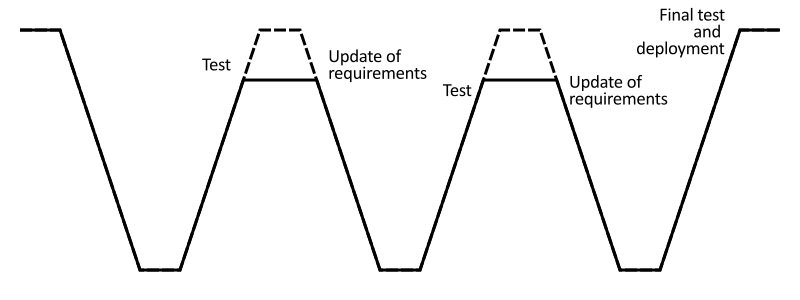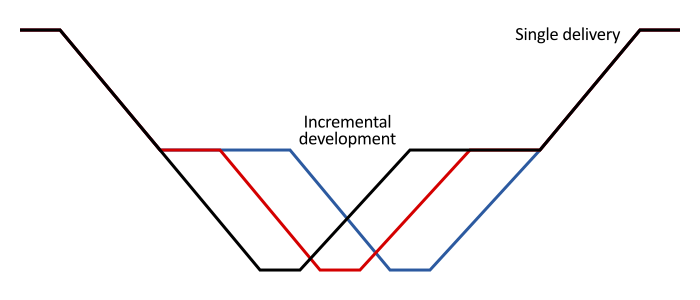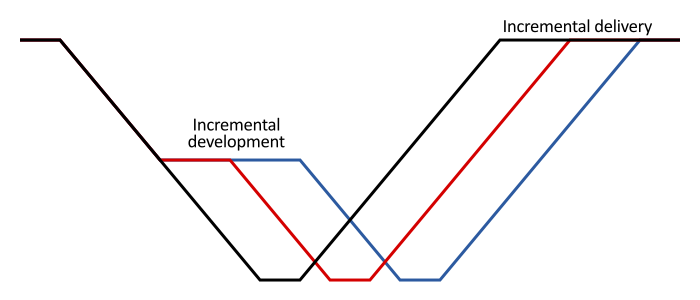The V-model
The waterfall model may be the most often referred model in project management. Even when we speak about the agile approach, we refer to the waterfall model as a basis of comparison. The V-model is a refinement of the waterfall model, which also helps to reveal its strength even today.
Evolved in the 1960s and 1970s, the model is widely used in the development of safety-critical systems and in regulated industries where formal documentation and traceability of features and requirements are important. The waterfall model is a risk-averse approach to project execution where we do not proceed to a subsequent phase downstream until we have fully completed the current phase. The V-model helps us understand the reason behind this approach by dividing the project cycle into two major stages. The figure on the left (above if you read on a mobile device) illustrates the concept. Decomposition and definition make up the primary phase. Our goal in this stage is a thorough understanding and refinement of requirements. The second stage is about integration and verification.
The model’s brilliance resides in its ability to show how verification steps, located at V's right, match requirements on the left.
The V-model is a lot more powerful than simply turning the second half of the waterfall upwards. We can use this idea to visualize iterative and incremental project cycles and then plan testing and validation strategies in advance. See the examples below to understand how the V-model captures various project approaches.
The first image illustrates a development cycle that starts with incomplete requirements and then goes through several iterations. Dashed lines show when we can implement partial solutions. The continuous line shows how we can proceed with iterations with a single release of the final solution at the end.

The second figure shows the case of incremental development with a single delivery at the end. This could also represent an agile sprint with user stories completed one by one and a release implemented at the end.

The third figure is an example of incremental development with incremental delivery. We start with a high-level analysis of the requirements to define system components and then work on the components separately.

These represent but several examples. The V-model is much more versatile. If we grasp the idea and follow the model, we can map the right validation process for even the most complex system development projects.
Get your free book now!
Start meditation now. The simple method I describe in my book works for everyone.
(c) Copiright 2020-2023 | Privacy Policy
Created with © systeme.io

